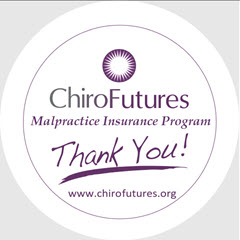Navigating the Maze of EHRs and Paper Records: A Risk Management Perspective
In today's rapidly advancing healthcare environment, Electronic Health Records (EHRs) are becoming the standard. However, the transition from paper records to EHRs is fraught with concerns, as evidenced by a recent consultation with Dr. Jones. As a professional in the healthcare industry, you may share similar concerns. Therefore, it's crucial to address these issues from a risk management perspective, with expert advice from the ChiroFutures Malpractice Insurance Program.
The Dilemma: Paper and Electronic Records in Tandem
Dr. Jones noted that a provider in the practice insisted on maintaining paperwork even after uploading it into the EHR system. It seems the question here is about redundancy: is it necessary, or even advisable, to keep both paper and electronic versions of the same document?
ChiroFutures' Take
In accordance with ChiroFutures Malpractice Insurance Program guidelines, once a document has been digitally uploaded into a patient's EHR, there's generally no requirement to maintain the paper version as well. This not only reduces clutter but also streamlines the information retrieval process. However, it's crucial that anything uploaded into the EHR, especially concerning a patient's health or health history, should be initialed and dated by the treating provider. This ensures that the information has been reviewed and verified, reducing the risk of malpractice claims.
The Importance of Verification
Initialing and dating any document added to a patient's EHR file serve multiple purposes:
1. Accountability: It ensures that the healthcare provider has actively engaged with and reviewed the information, thereby taking accountability for its accuracy.
2. Traceability: Should a question ever arise about the patient's health history or treatment, it provides a traceable action showing that the healthcare provider did indeed review the information.
3. Legal Safety: In the unfortunate event of a malpractice suit, these initials and dates can serve as evidence that due diligence was followed in managing the patient.
Why You Need a Good Malpractice Provider
Addressing such issues is precisely why having a robust malpractice insurance program like ChiroFutures is invaluable. They offer not just insurance coverage, but also guidance and advice on how to best manage risks in your healthcare practice. This is particularly beneficial when navigating the maze of EHRs and paper records.
1. Expert Advice: A good malpractice provider can provide you with accurate, reliable information on how to handle various situations, like the one Dr. Jones faced.
2. Legal Support: Should you ever find yourself faced with a malpractice claim, a strong malpractice insurance program will offer you the legal backing you need.
3. Peace of Mind: Knowing you have experts in your corner can ease the stress that comes with running a healthcare practice.
Conclusion
Balancing the traditions of paper records with the innovations of EHRs can be a tricky endeavor. However, by following best practices in risk management, you can streamline your processes, remain compliant, and reduce your liability. A good malpractice insurance program like ChiroFutures can provide the guidance and support you need to make these transitions as smooth as possible.
By taking informed steps in how you manage both paper and electronic records, you not only ensure a more efficient healthcare practice but also fortify your defenses against potential malpractice risks.

Blogs
- The Chiropractic Cartel: A Look Back at Bias in Accreditation and its Imact on Today's Profession
- Inside Montana's Chiropractic Monopoly: ACA & MCA's Brazen Board Takeover
- Concerns Grow About Control of the NY State Chiropractic Board by the ACA - Use of X-ray in NY Under Threat
- Reproductive Health Information and Chiropractic Care: Navigating New Privacy Regulations
- Navigating Substance Use Disorder (SUD) Consent: What Chiropractors Need to Know













